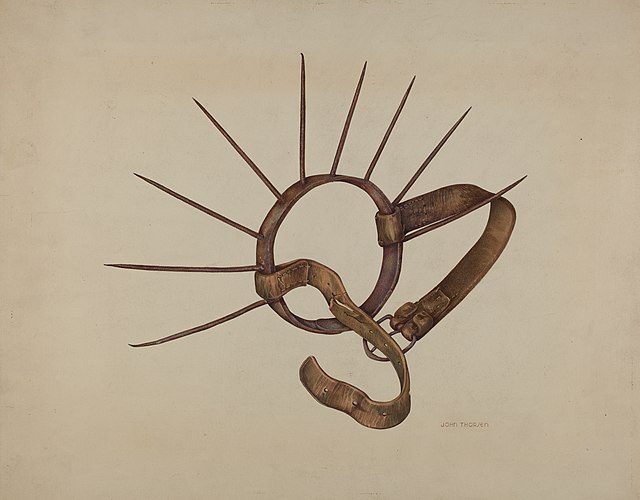Weaning is the process of gradually introducing an infant human or another mammal to what will be its adult diet while withdrawing the supply of its mother's milk.
Baby being offered baby food
A shellfish diver prepares for her work as a toddler nurses. (Japan, c. 1806)
Breastfeeding in tandem
1938 drawing of a calf weaner nose ring. This was strapped to the calf's face and made the calf's attempts to suckle very uncomfortable for the dam.
Breastfeeding, or nursing, is the process by which human breast milk is fed to a child. Breast milk may be from the breast, or may be pumped and fed to the infant. The World Health Organization (WHO) recommends that breastfeeding begin within the first hour of a baby's life and continue as often and as much as the baby wants. Health organizations, including the WHO, recommend breastfeeding exclusively for six months. This means that no other foods or drinks, other than vitamin D, are typically given. The WHO recommends exclusive breastfeeding for the first 6 months of life, followed by continued breastfeeding with appropriate complementary foods for up to 2 years and beyond. Of the 135 million babies born every year, only 42% are breastfed within the first hour of life, only 38% of mothers practice exclusive breastfeeding during the first six months, and 58% of mothers continue breastfeeding up to the age of two years and beyond.
A baby being breastfed
An Indian woman breastfeeds her baby.
Maternal hormone levels during pregnancy and after delivery of the placenta. Estradiol, estriol, progesterone, testosterone, and sex hormone binding globulin (SHBG) all increase throughout the pregnancy, and experience an abrupt drop-off after delivery of the placenta.
Newborn rests as a caregiver checks its breath sounds with a stethoscope








